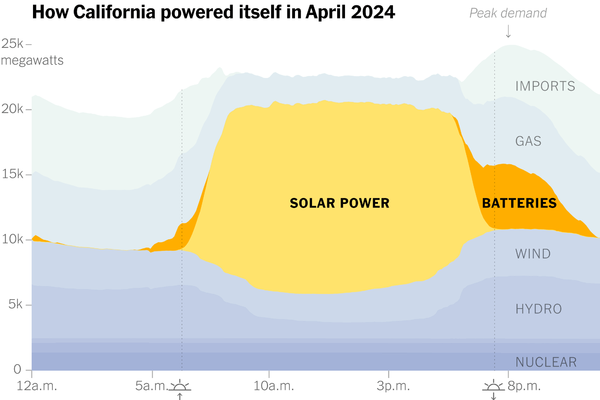Across the country, companies have been installing giant batteries that help them use more wind and solar power. That’s about to get much harder.
The sweeping tariffs that President Trump announced on Wednesday could hobble the use of giant batteries that energy companies are increasingly installing to help them tap more wind and solar power and make the broader electric grid more reliable.
Over the past five years, grid batteries have become one of the biggest growth industries in the U.S. energy sector. In states like Texas and Arizona, companies have been installing stacks of lithium-ion cells the size of shipping containers. They can soak up excess wind and solar energy and save it for when it’s needed. In California, the use of batteries to store solar power for the evening hours has helped utilities reduce the amount of natural gas that is burned.
Yet the majority of America’s lithium-ion batteries are still imported, and 69 percent of those imports came from China in 2024, according to BloombergNEF. Mr. Trump’s latest round of tariffs, when combined with earlier trade moves, will impose a 64.5 percent tax on grid batteries from China, and that rate would rise to 82 percent next year.
“This will throttle U.S. energy storage deployment,” Jason Burwen, vice president of policy and strategy at the battery developer GridStor, wrote in a social media post. “Bad for business, bad for grid reliability.”
Energy companies were expected to install a record 18,200 megawatts of grid battery capacity this year, enough to store the entire output from 18 large nuclear reactors for a few hours, according to the U.S. Energy Information Administration. Together, batteries, wind and solar power were expected to make up 93 percent of capacity added to the grid.
Utility-scale battery capacity in the United States
Battery storage rose by 66 percent in 2024 compared with the year before.
